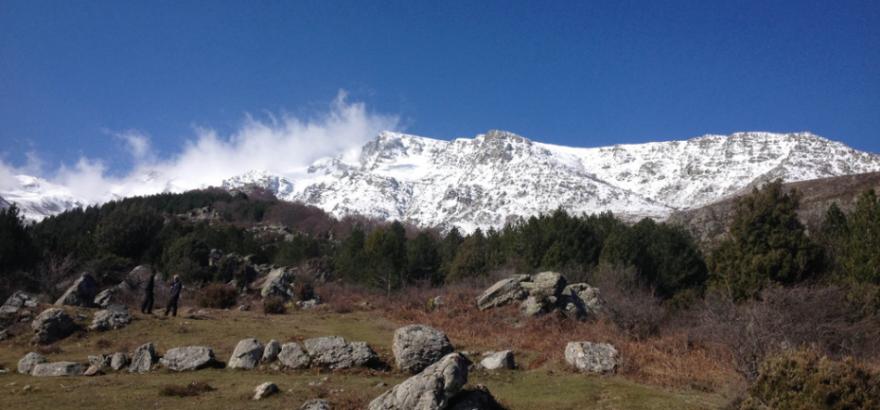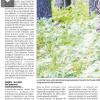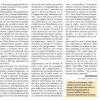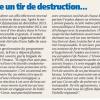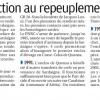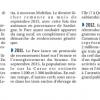Corsican Deer: a long way back
40 years ago the Corsican Sardinian Deer disappeared from Corsica and reached the “endangered” threshold in Sardinia.
Thanks to these 200 animals survived in Sardinia the history of this endemic species could start back. Paul – Antoine Susini, manager of Corsica Regional Park, is willing to tell us this amazing story: “the protection of this animal is now in a context of international cooperation among the islands of the Mediterranean Sea. We should thanks the pioneers of the deer protection for the great results we recently reached. They opened the way to cooperation links that didn’t exist before”.
Damages: over the experimental initiatives…
Since the creation of Sardinia reproduction areas, the moving of animals towards new areas was extended to Corsica, with the first release dated back to 1998, 30 years after the last Corsican deer died. The actual population is assessed between 1,200 and 1,300 animals, a level which lets the Regional Park of Corsica to look positively to the future. In the next future it is possible to stop the moving of new animals from Sardinia and to start to actively manage the population of Corsica.
Stevan Mondoloni, coordinator of the Park program, is monitoring every step of the project: “the population trend is good, with an average release every two years. The deer has conquered back its territory, mainly on Alta Rocca area, where the environment is particularly friendly. But also other areas were cosy, and from the altitude of 1,000 m where deers were released, they now have reached also the oriental valley”.
Occupying back a territory and being greedy of fruit and vegetables, the deer is damaging the local primary productions. Complying with the French law, the Haute-Corse haunting federation should reimburse the damages and for this reason they don’t totally agree with the protection project. “It’s true that the current law force the haunting federation to pay back for the damages – says Stevan Mondoloni – and problem is that the French Government hasn’t recognised yet the subspecies of Cervus Corsicanus, contrary to the European Law. So a potential partner of the deer protection is currently an opponent. We are working to upgrade the French Law and solve the problem”.
In the meantime, the Regional Park has already taken action with some physical solutions, such as 11.2 km of electrified fences. Anyway the problem is not over: “Animals move around – says Mondoloni – and we need more financing resources knowing that in the end the Law will be changed”. In Paul-Antoine Susini opinion we have learnt important lessons. “For sure there are still problems to be solved, but LIFE projects have a key role. They helped to put in action some first solutions and they are helping to find a juridical upgrade”.
The future is in a coordinated management plan between Corsica and Sardinia. A general frame which will let local administrations to take over of European programs. About the possibility that in the future the deer can be haunted again, Paul – Antoine Susini bases his opinion on data: “the population trend will say”.
Written by Noël KRUSLIN
It’s the third official episodes in the last two years. The Regional Park is helping local police to find the poachers. “It’s a very bad crime because the deer is under a strict European protection scheme. It’s a symbol of our island as well as a sign of ecological richness”, wrote the Regional Park, “for these reasons we are cooperating closely with local populations as well as with some haunting associations”.
From extinction to repopulation
- 1969. The last deer is killed on the oriental valley. The subspecies of Corsica and Sardinia officially disappear from Corsica. In Sardinia only 200 are still alive and some of them are captured and put inside protected small areas.
- 1972. The Corsica Regional Park is founded. The reintroduction of the deer is one of its goals. Under the guide of Jacques Leoni it starts to take contacts with Sardinia colleagues. On 1985, 4 animals are moved from Sardinia to the small protected area of Quenza (Corsica).
- 1991. The area of Quenza received more animals from Sardinia. It works good and the Regional Park decides to open more areas in Casabianda and on 1994 in Ania di Fium’Orbu.
- 1998. It’s a key moment: the first release in nature. In Alta – Rocca mountain, 16 deers are freed to conquer back their territory. The following year other 24 animals are freed. In 2002, the Regional Park frees other 16 animals in Alta – Rocca and from that moment other animals are released in different areas. Some new animals arrive from Sardinia, because it’s necessary to strengthen genetically the sub species.
- 2011. The Park starts the first census. On September 2015 it assesses more than 1,000 animals, in a range between 1,200 and 1,300. In the meantime more animals are ready in the three small protected areas (7 in Quenza, 40 in Ania, 62 in Casabianda).
- 2012. New releases can be undertake with the LIFE European resources. In cooperation with Sardinia, the European funds amount for 2 million to be spent within 5 years. Three main goals: protection, equilibrium with local populations and educational activities.









